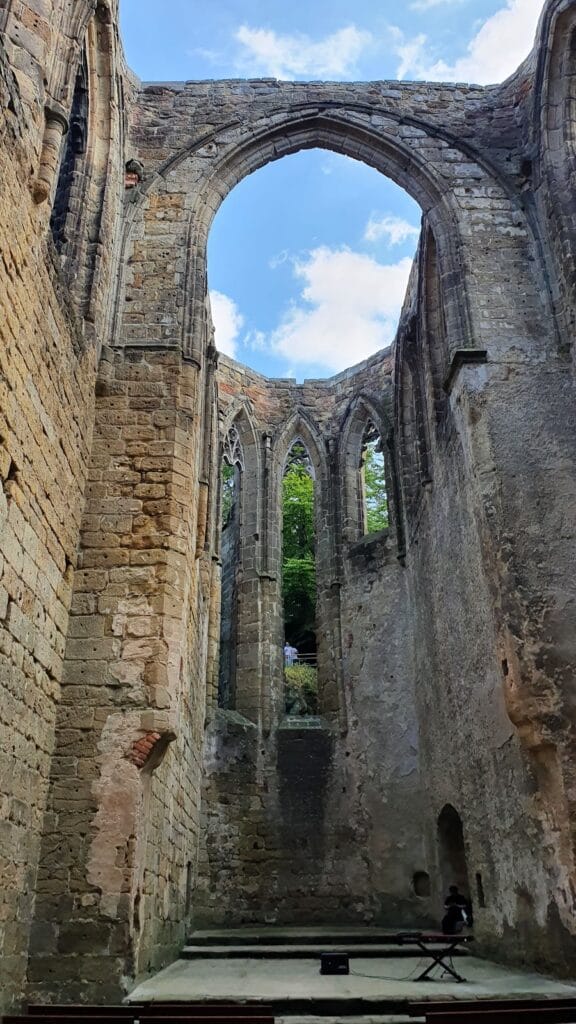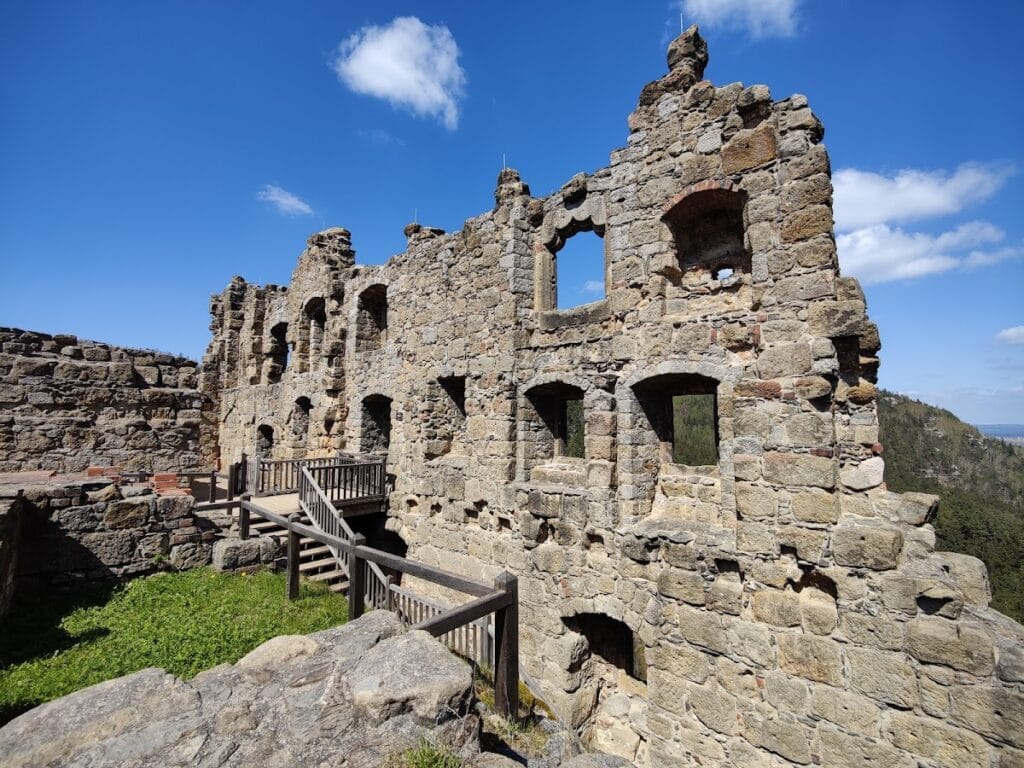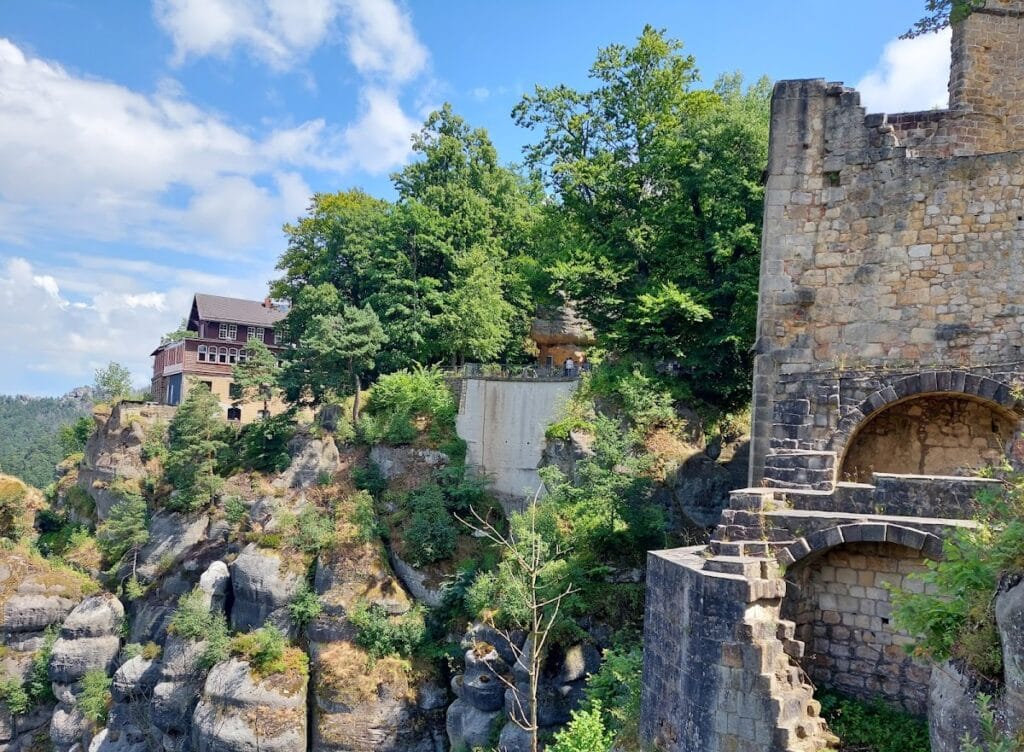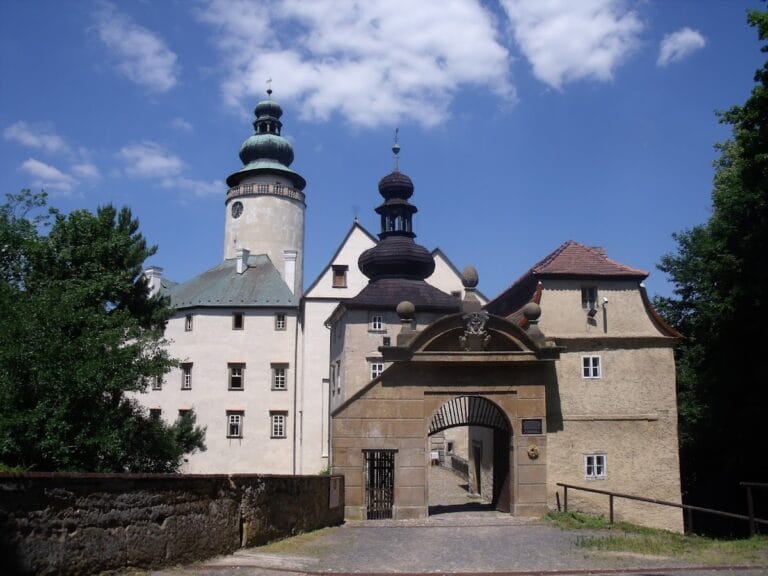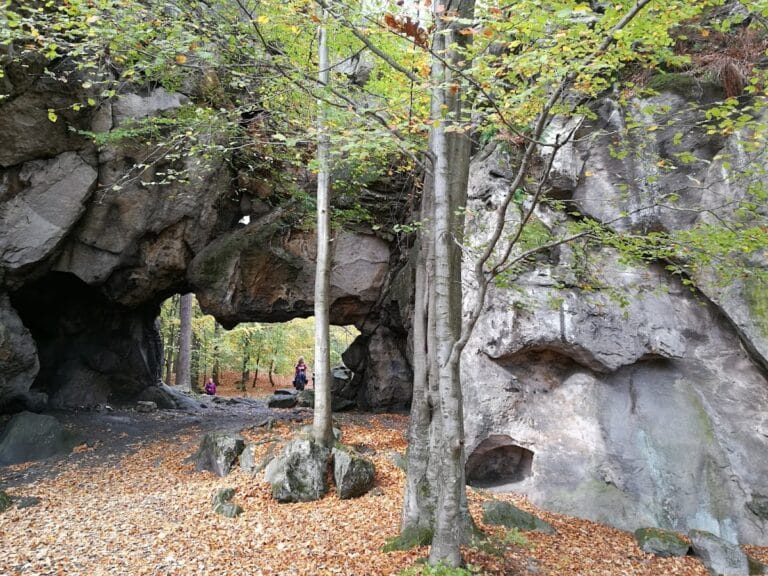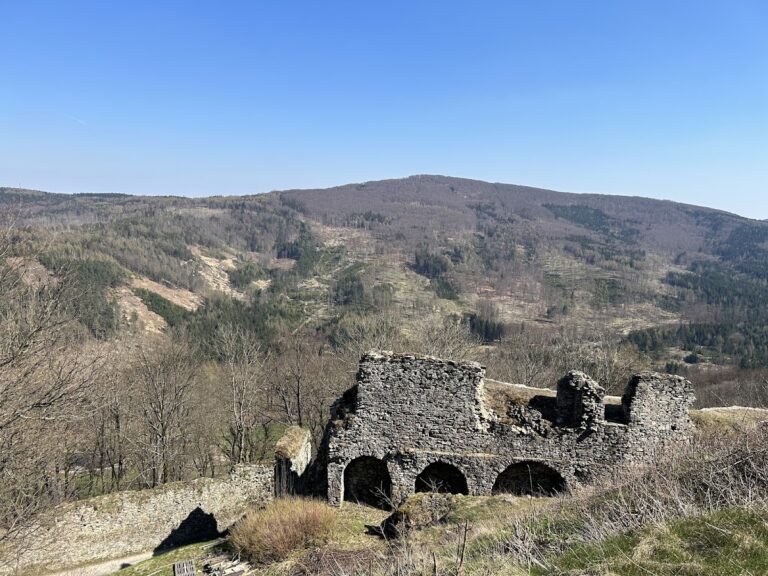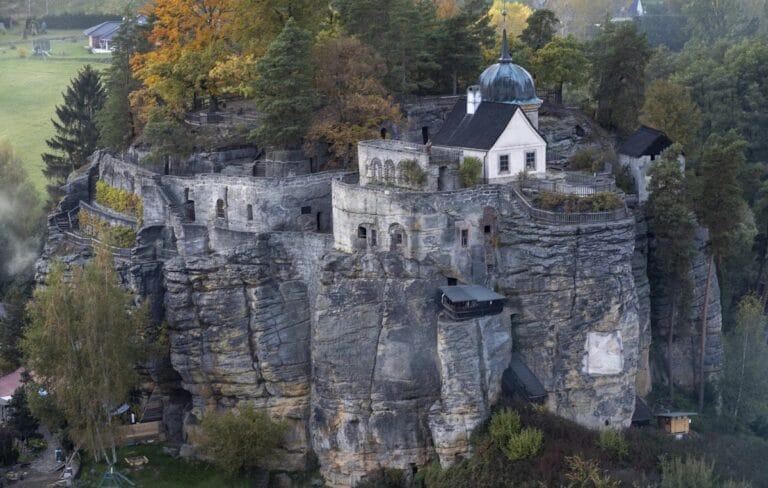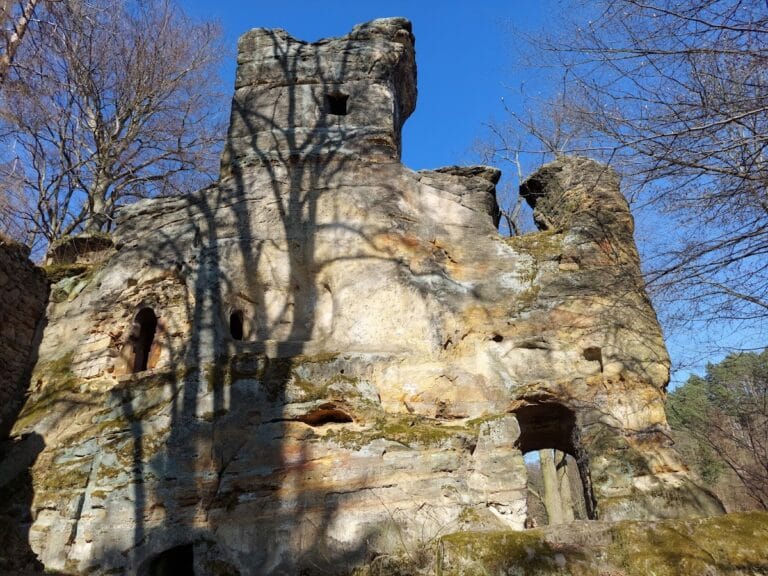Burg Oybin: A Historic Castle and Monastery Ruin in Germany
Visitor Information
Google Rating: 4.9
Popularity: Medium
Google Maps: View on Google Maps
Official Website: burgundkloster-oybin.com
Country: Germany
Civilization: Medieval European
Remains: Military
History
Burg Oybin is a ruined castle located on Oybin hill within the municipality of Oybin in modern-day Germany. The origins of human activity on Oybin hill trace back to the Bronze Age, with archaeological evidence showing settlement from as early as the 11th to 12th centuries BCE. The earliest stone structures of the castle itself date from the 13th century and were constructed by Bohemian builders.
The castle first appears in historical records in 1291 under the name Moybin when it was destroyed by troops from the nearby town of Zittau. At that time, it served as a base for robber knights who used it for raids. After the destruction, the stronghold was quickly rebuilt and fortified. Between 1311 and 1316, Henry of Lipá, the marshal to King John of Bohemia, enlarged the castle into a fortified base designed to protect a nearby trade route. By 1346, the castle had come under the direct ownership of the Bohemian crown.
In 1364, Emperor Charles IV commissioned the construction of the imperial house (Kaiserhaus) on the western side of the hill, intended as a secluded retreat. Shortly after, a monastery of the Celestine order dedicated to the Holy Spirit was established in 1369. The adjacent Gothic church was built from 1366 to 1384 with contributions from the workshop of the noted Prague master builder Parléř. Until the Protestant Reformation, the monastery sheltered a small community of six to twelve monks, including the inquisitor and prior Petrus Zwicker from 1395.
The castle’s military importance was tested during the Hussite Wars in the early 15th century. It withstood two sieges in 1420 and 1429 due to its robust walls and strategic position atop the steep rock. Its reputation as an impregnable fortress was further solidified after these events. During this turbulent period, part of the valuable St. Vitus treasure was secured inside the castle. Archaeological excavations have revealed a war wagon at the foot of the hill, emphasizing the military activity associated with Oybin.
Expansion of both the castle and monastery continued until the mid-1500s. The Reformation led to the monastery’s dissolution, and in 1556 Jesuits briefly occupied the site before departing in 1562, taking many valuables to Prague. By 1574, the town of Zittau had gained possession of the monastery’s holdings and repurposed them mainly for storing weapons. The castle ceased to be inhabited by the 18th century and gradually fell into ruin, partly due to its use as a source of building materials. In 1577, the monastery church suffered a damaging fire caused by a lightning strike, and further destruction occurred due to rockfalls in the 1700s.
Interest in the castle revived during the 19th century Romantic movement, attracting artists like Johann Alexander Thiele and Caspar David Friedrich, who featured the ruins in their works. Scholarly studies followed, with Christian Adolph Peschcke and Moritz Oskar Sauppe publishing early scientific accounts. Restoration efforts began in 1829, focusing initially on clearing debris and later stabilizing the imperial house in 1877. Improved transportation links from Zittau in the 19th century increased access to the site. In 1879, Alfred Moschkau established a private museum and promoted the historical significance of Oybin through various publications. Early 20th-century research was continued by scholars such as Cornelius Gurlitt and Hugo Rathgens.
During the 20th century, the museum’s collection was greatly diminished by sales in 1936 and looting during World War II. Nevertheless, individuals like Hermann Knobloch worked to preserve unique artifacts, including the nearly destroyed Zittau Passion cloth dating from 1472. Post-war efforts involved extensive conservation and excavation, culminating in 1991 with the ruins largely uncovered, stabilized, and partially rebuilt. Since 1972, the monastery ruins have been used as a venue for concerts, capitalizing on their remarkable acoustics. Cultural memory of the Celestine monks continues through a local association that organizes historical monk processions affiliated with the Centro Celestiniano in L’Aquila, Italy.
Remains
Burg Oybin occupies the entire summit of Oybin hill and is a complex of ruins including the castle, an imperial house, monastery structures, a hilltop cemetery, and visitor facilities. Its defensive walls are constructed upon steep rocky terrain, integrating natural features into the design and contributing to the castle’s historical reputation for impregnability.
Central to the site is the Gothic church of the Celestine monastery, constructed between 1366 and 1384. The church was built in collaboration with the workshop of Master Parléř, an esteemed builder from Prague. Notable for its Gothic style, the church’s interior still preserves remarkable paintings. Although the church suffered destruction from fire in 1577 and later rockfalls, its ruins remain an expressive reminder of medieval religious architecture.
The imperial house, erected in 1364 by Emperor Charles IV as a retreat, stands on the western part of the hilltop. After centuries of neglect, restoration work in 1877 stabilized this structure to prevent further decay. Today, the imperial house remains a prominent, partially restored feature within the ruins.
The monastery ruins, which once housed a small community of Celestine monks, exhibit excellent acoustic properties and have been adapted as a concert venue since the early 1970s. This reuse highlights the enduring spatial qualities of the medieval architecture despite its fragmentary state.
At the base of the hill, archaeological discoveries include a war wagon armed with sails, linking the site to the military tensions and defenses associated with the Hussite Wars. Such finds enrich understanding of the castle’s role in regional conflicts.
A hilltop cemetery forms part of the overall complex, containing gravestones including one marking the resting place of Knight Peter of Debšice, who died in 1550. This gravesite connects the fortress to its historical inhabitants and visitors.
The blend of natural rock formations with the castle’s structural remains shapes the layout of the ruins. Over centuries, the rocky terrain influenced both defense strategies and architectural choices, resulting in fortifications and buildings that harmonize with the environment.
Extensive excavation, conservation, and partial rebuilding through the late 20th century have uncovered many elements of the castle and monastery, allowing visitors to gain insight into its medieval past. A monument to Christian Adolph Peschcke stands on site, commemorating his early 19th-century studies of Oybin. High on the summit, a camera obscura offers a unique visual feature above the ruins, adding to the historic landscape.
